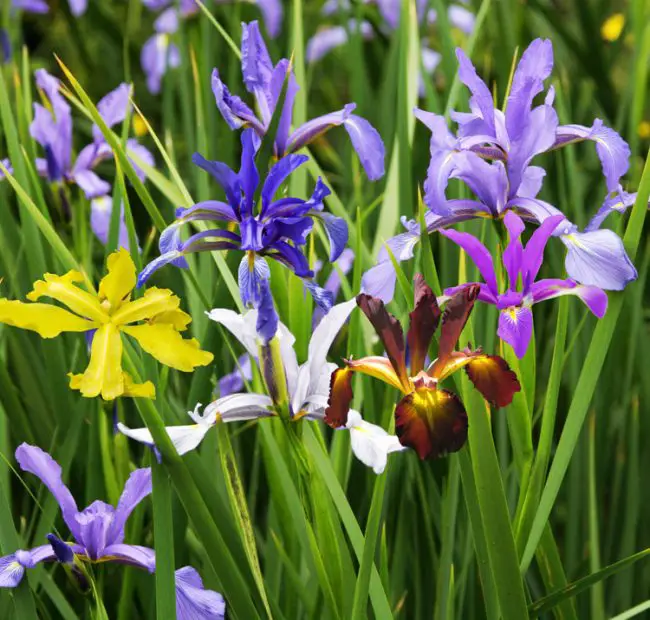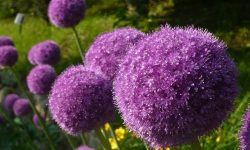Transplanting irises at the right time can be the difference between a garden bursting with vibrant, healthy blooms and one filled with struggling, lackluster plants. Timing isn’t just about the season—it’s about aligning with the plant’s natural growth rhythm to ensure the roots establish well and the plant can thrive.
Whether you’re growing bearded irises, Siberian irises, or other varieties, moving them during the optimal phase of their life cycle sets the stage for stronger growth and more reliable flowering next season. This guide will walk you through the essential timing and techniques to transplant irises with success and confidence.
Understanding the Iris Growth Cycle

Iris plants, particularly rhizomatous varieties like bearded irises, follow a distinct seasonal growth cycle that directly influences when and how they should be transplanted. Recognizing the phases of this cycle helps gardeners avoid disrupting vital stages of development and ensures the plant has the energy and structure needed to thrive after being moved.
Spring: Active Growth and Blooming
In most climates, irises begin their active growth phase in early to mid-spring. As temperatures warm, the rhizomes awaken from winter dormancy and initiate vigorous shoot development. By late spring or early summer, the plants produce their iconic blooms, drawing nutrients from both the roots and stored reserves in the rhizome.
This period is not ideal for transplanting, as irises are focused on above-ground growth and flower production. Any disturbance to the roots at this time can compromise blooming and leave the plant weakened, potentially causing it to skip its next flowering cycle. However, observing bloom performance during this time can give you early clues about whether a transplant may be needed later—such as signs of overcrowding, reduced flower size, or irregular bloom patterns.
Early Summer: Post-Bloom Recovery
Once blooming finishes, usually by late June or early July depending on the region, irises enter a critical recovery phase. During this time, they redirect energy from flowering into rebuilding the rhizome and growing new feeder roots. Foliage remains active, conducting photosynthesis and storing carbohydrates to fuel next season’s growth.
This is the ideal time to start planning for transplanting. The plant has finished blooming and is naturally entering a semi-dormant state, making it more tolerant of being lifted and relocated. Waiting about four to six weeks after flowering allows enough time for energy storage while ensuring the plant hasn’t fully shut down.
Late Summer to Early Fall: Rhizome Expansion and Division
By late summer, new rhizomes often begin forming alongside the original one, causing clumps to expand. This is the prime opportunity for division, as the new growth is still soft and easily separable, and the plant has enough warmth to regrow feeder roots before dormancy sets in.
During this stage, irises are not actively blooming but are still metabolically active beneath the surface. Transplanting now allows them to establish in their new location before the cold slows their development. This root re-establishment period is critical; plants moved too close to winter may not anchor securely, leading to frost heave or rot.
Fall and Winter: Dormancy and Rest
As temperatures drop, irises gradually enter full dormancy. Foliage begins to die back, and the rhizomes slow down their metabolism. This dormant phase is necessary for the plant’s internal clock to reset and prepare for the next growth cycle.
Transplanting during dormancy is not advisable unless absolutely necessary, such as when correcting disease or drainage issues. Irises moved during this period may not establish roots well and could be more vulnerable to cold damage. If transplanting must be done in late fall, mulching becomes essential to protect the rhizomes through winter.
Best Time of Year to Transplant Irises
Timing plays a pivotal role in how well irises respond to transplanting. While these hardy perennials are relatively forgiving, choosing the right season can drastically improve their survival rate, root development, and future blooming performance. The best time to transplant irises often depends on your climate zone, the type of iris you’re growing, and the condition of your existing plants.
Late Summer to Early Fall: The Optimal Transplanting Window
In most regions, the best time to transplant irises is from late July through September. This window follows the post-bloom recovery phase, when irises naturally begin to slow their above-ground growth and concentrate energy below the soil surface. Moving them at this time minimizes stress and allows them to re-establish before winter.
Soil temperatures during late summer are still warm enough to stimulate new root development. When transplanting during this period, the rhizomes have several weeks to anchor themselves in the soil before entering winter dormancy. This head start ensures a robust root system that can support vigorous foliage and flower production the following spring.
Additionally, late summer transplanting allows you to divide overgrown clumps, remove diseased sections, and reposition plants in better-lit or better-drained locations—essential factors in long-term plant health and bloom quality.
Timing Based on USDA Hardiness Zones
Climate plays a central role in choosing your transplanting date. In cooler northern zones, such as USDA zones 3 through 6, it’s essential to transplant by mid to late August. The earlier window gives irises enough time to develop roots before the first hard frost.
In moderate climates, like zones 7 and 8, transplanting can extend into early to mid-September without significant risk. Southern gardeners in zones 9 and 10 may even wait until early October, provided the days are still warm and nighttime temperatures remain above 50°F. In very hot southern regions, transplanting early in the morning or on overcast days helps prevent heat stress.
Can You Transplant in Spring? Benefits and Drawbacks
While not ideal, spring transplanting is possible in certain circumstances. If your irises were lifted and stored over winter, or if you must urgently relocate plants due to construction or weather damage, early spring is the second-best time to transplant.
Transplant as soon as the soil is workable and danger of deep frost has passed. Aim for a period before rapid foliage growth begins, typically in March or early April, depending on your region. Be aware, though, that irises moved in spring may not bloom that season, as the plant will prioritize root establishment over flower production. With proper care, they usually rebound by the following year.
Situations Requiring Off-Season Transplanting
There are certain emergencies where transplanting outside the preferred windows becomes necessary. Severe fungal infections, drainage problems, or physical damage to your garden bed may demand immediate action. In such cases, transplant irises with extra care—trim the foliage, handle the rhizomes gently, and plant in a well-prepared, protected site.
Supplement with mulch to buffer temperature swings and provide shade during heat waves or direct sun exposure. Transplants done under duress may take longer to settle, and bloom production might be affected for a season or two.
Why Avoid Winter and Peak Summer Transplanting
Transplanting during winter dormancy or peak summer heat should generally be avoided unless absolutely necessary. In winter, frozen soil makes digging difficult and prevents proper root growth, while cold stress can cause rhizome rot or heaving. Conversely, transplanting during extreme summer heat can result in desiccation, sunburn, and transplant shock, especially if the foliage is still lush.
Even though irises are tough plants, giving them the best possible start in their new location increases their long-term vigor and floral display. Timing the move to match their natural growth rhythm is the most effective way to ensure healthy adaptation.
How to Know When Your Irises Need Transplanting
Not all irises require frequent transplanting, but over time, even the healthiest clumps will benefit from being lifted, divided, and relocated. Recognizing the signs that your irises need this rejuvenation is essential for keeping them vibrant, disease-free, and consistently blooming year after year. Paying close attention to both what you see above and below ground can reveal when it’s time to take action.
Declining Bloom Production
One of the most obvious signs that irises need transplanting is a noticeable drop in flower quantity or size. If your irises bloomed prolifically in past seasons but now produce fewer or smaller flowers, it often means the rhizomes are overcrowded and no longer have access to sufficient nutrients or space. This overcrowding inhibits flower development, even though foliage may remain lush and green.
Irises need open air and good light penetration at the rhizome level to encourage blooming. When old rhizomes pile up on each other, they can choke off the youngest, most productive segments. Dividing and transplanting helps redistribute energy to younger rhizomes that are more capable of supporting vigorous blooms.
Overcrowded or Expanding Clumps
If your iris bed appears congested, with fans growing tightly packed together or spreading beyond their designated space, it’s a clear sign that the clump needs division. Healthy iris clumps expand outward naturally, but without periodic thinning, they form dense mats where central rhizomes die off and only outer sections remain active.
This pattern not only reduces overall plant vitality but also creates a microclimate that encourages rot and pests. Transplanting allows you to remove dead or diseased rhizomes, refresh the planting site, and give healthy segments room to grow and breathe.
Leaf and Foliage Discoloration
Yellowing leaves, brown tips, or an overall loss of vigor may indicate poor airflow or nutrient deficiencies caused by crowding. While occasional discoloration can result from weather stress or watering issues, persistent or spreading symptoms are a cue to inspect the root system.
Overcrowded rhizomes compete intensely for water and minerals, often leaving some fans undernourished. Transplanting helps rebalance the population, ensuring each plant gets the nutrients and light it needs for optimal health.
Rhizome Exposure or Heaving
Rhizomes should lie just at or slightly below the surface of the soil. Over time, erosion, frost heaving, or natural growth can leave them overly exposed. If you notice thick rhizomes sitting high above ground, desiccated or cracked by the sun, they are more vulnerable to drying out or freezing.
Transplanting allows you to replant rhizomes at the correct depth, promote better anchoring, and adjust soil levels to protect against environmental stress. It’s also a good opportunity to improve drainage and amend soil if necessary.
Signs of Disease or Pest Infestation
Rotting rhizomes, foul odors, mushy textures, or visible insect damage are all red flags that the iris clump needs urgent attention. Iris borers, for instance, tunnel through rhizomes and can cause entire clumps to collapse if not addressed.
In these cases, transplanting becomes a remedial action. Digging up the clump allows you to remove infected parts, treat remaining healthy sections, and move the plant to a cleaner, more suitable site. Immediate intervention can prevent the spread of disease to other nearby plants.
Slow or Stunted Growth
If irises emerge slowly in spring or fail to develop their usual height and structure, it may be due to a lack of root space or poor soil conditions beneath the surface. Rhizomes can become entangled, choked by decaying material, or simply exhausted from years of continuous growth.
Transplanting not only rejuvenates the root system but also gives you a chance to assess the soil, break up compacted areas, and introduce organic matter that supports long-term health.
Preparing Irises for Transplanting
Proper preparation is essential to ensure that your irises respond well to transplanting and recover quickly in their new location. Taking the time to prepare both the plants and the site increases the chances of successful root establishment and vibrant blooms in the following season. This stage is where careful handling makes a noticeable difference in plant health.
Watering Before Digging
A day or two before transplanting, water the iris bed thoroughly. This softens the soil, making it easier to lift the rhizomes without damaging their roots. Moist soil also reduces transplant shock by maintaining some hydration in the root zone. However, avoid watering immediately before digging, as overly wet soil can make rhizomes more prone to breakage and rot.
Trimming Foliage for Energy Redirection
Before lifting the plants, use sterilized shears to trim back the fan-shaped foliage to about six inches tall. This helps reduce moisture loss through evaporation and limits the stress placed on the plant during transplanting. Shortened leaves also make the plant easier to handle and encourage it to focus energy on root recovery rather than supporting excess top growth.
Digging and Lifting with Care
Use a garden fork or spade to gently loosen the soil around the entire clump, inserting the tool about six inches away from the base to avoid piercing the rhizomes. Lift the clump carefully from underneath, preserving as many roots as possible. If roots or rhizomes break during removal, inspect the damage and trim with clean tools to prevent infection.
Cleaning and Inspecting Rhizomes
Once lifted, gently shake off excess soil and examine each rhizome. Look for firm, healthy tissue and active roots. Remove and discard any soft, shriveled, moldy, or discolored segments. Healthy rhizomes should be plump, tan or light brown in color, and free from any unpleasant odor. Washing them with water or briefly soaking in a diluted bleach solution can help remove pests and pathogens, especially if rot or iris borer activity is suspected.
Allowing Rhizomes to Cure
After division and cleaning, allow the rhizomes to sit in a dry, shaded location for 24 to 48 hours before replanting. This curing period helps any cut surfaces callous over, which reduces the risk of rot after planting. Lay them out on a screen, a piece of cardboard, or in a shallow tray, ensuring good airflow around each rhizome.
Replanting Irises in Their New Home
After preparing the rhizomes, the success of your transplant largely depends on how carefully you replant them. Iris rhizomes are not like typical bulbs—they require a specific planting depth, proper spacing, and well-conditioned soil to avoid rot and encourage healthy regrowth. Taking the right steps at this stage ensures strong root establishment and optimal bloom performance in future seasons.
Choosing and Preparing the Planting Site
Select a location that receives full sun for at least six hours daily, as irises require ample light to produce strong flower stalks and prevent fungal disease. Avoid low-lying areas where water may collect, since standing water can quickly lead to rhizome rot.
Before planting, loosen the top 10 to 12 inches of soil using a garden fork or tiller. Incorporate organic matter such as compost or well-aged manure to improve soil structure and drainage. If your soil is heavy clay or very sandy, amend it with compost mixed with coarse sand or perlite for better aeration. A neutral to slightly acidic pH (6.5 to 7.0) is ideal for most iris species.
Avoid adding high-nitrogen fertilizer at planting time, as it may promote foliage growth at the expense of blooms and increase the risk of soft, rot-prone rhizomes. Instead, you can mix in a low-nitrogen, phosphorus-rich fertilizer (such as 5-10-10) at the base of the bed and water it in lightly.
Setting the Rhizomes Correctly
Form a small mound of soil in the center of the planting hole, gently fanning the iris roots over the mound. Position the rhizome horizontally with the top of it just barely exposed at the soil surface or covered with no more than half an inch of loose soil. In warmer climates or sandy soils, leaving the rhizome slightly exposed is often preferable to prevent moisture retention around the base. In colder or wind-prone areas, covering it lightly helps reduce frost heaving and drying.
Orient the fan of leaves facing the direction you want the plant to grow. If planting multiple divisions, stagger them so that the fans are not all pointed inward, which can reduce airflow and promote disease.
Proper Spacing and Grouping
Space each rhizome 12 to 18 inches apart to allow for future expansion and to promote good air circulation. Crowded planting leads to poor bloom production, encourages pest infestations, and makes future divisions more difficult.
If you’re replanting irises in a mass display, group them in clumps of three to five rhizomes spaced in a triangular or staggered pattern. This allows for a natural-looking design while maintaining healthy spacing. It also ensures the clump will fill in evenly over the next two to three years.
Watering and Settling the Soil
After planting, water the bed thoroughly to settle the soil around the roots and eliminate air pockets. Use a gentle spray or soaker hose to avoid displacing the rhizomes. Continue to water lightly every few days for the first two to three weeks, especially during hot or dry spells. Allow the soil to dry slightly between waterings, as overly moist conditions can lead to rot before the rhizomes establish.
Once new leaf growth appears, reduce watering frequency to encourage the plant to adapt to its environment and prevent fungal issues. Mulching can help retain moisture in dry climates, but avoid placing mulch directly over the rhizomes.
Post-Transplant Care for Stronger Blooms
Successful transplanting doesn’t end with placing irises in the ground—post-care is key to root establishment and future blooms. Focusing on moisture, nutrients, and environmental conditions will help your irises recover quickly and thrive.
Watering Wisely for Root Establishment
In the first few weeks after transplanting, keep the soil lightly moist—not wet. Overwatering can cause root rot and rhizome decay. Water only when the top two inches of soil feel dry, and reduce frequency once new growth appears. This encourages deeper, stronger root systems.
Delaying Fertilization Until Growth Resumes
Avoid applying fertilizer immediately. Newly transplanted irises are sensitive to excess nutrients. Wait six to eight weeks until new leaves form, then use a balanced, low-nitrogen fertilizer like 5-10-10. Apply around the base, avoiding direct contact with the rhizome.
Supporting Recovery with Clean Conditions
Clear weeds and dead foliage regularly to prevent competition and disease. If leaves yellow or wilt, trim them away to redirect energy to healthy growth. Monitor for iris borers or aphids, which can set back recovering plants.
Preparing for Winter (If Transplanted in Fall)
In cold climates, add a light mulch after the first freeze to protect shallow rhizomes. Use straw or pine needles, and remove it in early spring. In warmer zones, mulch may not be necessary—just maintain well-drained soil.
Patience for Blooming
Newly transplanted irises may not bloom the first year. Focus on foliage and root health during this time. With proper care, strong blooming usually returns by the second season.
Expected Bloom Results After Transplanting
Transplanting irises is an investment in future blooms, but it’s important to manage expectations realistically. Even with proper technique and timing, most irises won’t bloom immediately after being moved. Their energy shifts toward rebuilding roots and foliage before focusing on flowering.
Delayed Blooming Is Normal
In most cases, irises transplanted in late summer or early fall will not bloom the following spring, especially if the rhizomes were divided heavily. The plant requires time to re-establish itself in the new location, develop strong root systems, and regenerate sufficient leaf mass. Typically, you can expect full blooms to return one growing season after transplanting.
For example, if you transplant irises in August, they may not bloom the next spring, but strong foliage growth throughout that year sets the foundation for robust flowering the following spring.
Factors That Influence Bloom Return
The speed at which irises return to bloom depends on several key factors. Healthy, disease-free rhizomes with ample storage reserves will recover faster. Transplants that experience minimal root damage during division tend to establish more quickly. Also, favorable environmental conditions—such as well-drained soil, full sun, and good air circulation—can significantly accelerate recovery.
On the other hand, if the irises are divided too late in the season, planted too deeply, or stressed by drought or pests, bloom performance may be delayed beyond one year.
Signs That Future Blooms Are on Track
Even without flowers, you can monitor progress through foliage. If strong green fans develop by late spring or early summer, this indicates healthy growth and likely blooms in the next cycle. Multiple new shoots or increase in rhizome size by the following season also suggest that the plant is reestablishing well and preparing to flower.
Supporting Bloom Production After Recovery
To encourage blooming after transplanting, focus on proper spacing, sunlight, and post-care. Remove weeds regularly, ensure the rhizomes stay partially exposed to sunlight, and avoid high-nitrogen fertilizers that promote leaf over flower growth. With attentive care, your irises will often reward you with more vigorous, long-lasting blooms than before transplanting.
Troubleshooting Common Transplanting Issues
Even with the best planning, transplanting irises can sometimes lead to challenges. Recognizing symptoms early and applying targeted solutions will protect your irises and set them on the path toward recovery and future blooming.
Wilting or Yellowing Leaves After Transplant
Mild wilting in the first few days is normal as the plant adapts to its new location. However, prolonged yellowing or collapse of leaves could signal transplant shock or improper soil moisture.
Technical Fix: Check soil drainage immediately. If the soil remains soggy, lift the rhizome gently and improve drainage using sand or organic matter. In dry conditions, water just enough to keep the top 1–2 inches of soil slightly moist. Avoid overhead watering to prevent fungal issues. Trim back severely wilted leaves by one-third to reduce moisture loss and redirect energy to roots.
Rhizome Rot or Softness
A common issue after transplanting is rhizome rot, often caused by overwatering, fungal infection, or planting too deeply. Rotting rhizomes feel mushy, smell foul, or show signs of black or brown decay.
Technical Fix: Remove the plant and inspect the rhizome. Use a sterile blade to cut away all soft, discolored tissue until only firm, white tissue remains. Dust the clean cut areas with powdered sulfur or a fungicide to prevent reinfection. Replant in a mound of well-drained soil, leaving the top of the rhizome partially exposed to sunlight.
No New Growth Several Weeks After Planting
If your iris shows no signs of leaf development weeks after transplanting, it may be suffering from root damage, overly compacted soil, or poor planting depth.
Technical Fix: Gently loosen the surrounding soil to improve oxygen flow. Check for firmness of the rhizome—if it’s hard and not shriveled, wait a few more weeks. Avoid fertilizing too soon, as this can stress the plant further. If the rhizome appears desiccated or dry, soak it for 1–2 hours in room-temperature water before replanting.
Irregular or Sparse Blooming the Following Year
Sometimes irises recover vegetatively but produce few flowers the season after transplanting. This usually stems from overcrowding, low sunlight, or nutrient imbalance.
Technical Fix: Make sure rhizomes are spaced 12–18 inches apart to allow proper air and light circulation. Choose a location with at least 6 hours of full sun. In early spring, apply a balanced low-nitrogen fertilizer like 5-10-10 to promote bud formation rather than leafy growth. Remove any nearby weeds or shading plants.
Pest or Disease Infestation
After transplanting, stressed irises are more vulnerable to pests like iris borers or diseases like bacterial soft rot and fungal leaf spots.
Technical Fix: Inspect regularly for chewed leaves or bore holes. Remove infected leaves immediately and treat with insecticidal soap or neem oil. For fungal issues, use a copper-based fungicide and ensure good air circulation. Avoid watering late in the day, and always water at the base to keep foliage dry.
Frequently Asked Questions (FAQ)
How often should irises be transplanted?
Most irises benefit from being divided and transplanted every 3 to 5 years. Over time, clumps become overcrowded, which leads to reduced flowering and increased risk of disease. If you notice a dense mass of rhizomes with few blooms, it’s likely time to divide and replant.
Can I transplant irises in the spring?
Yes, but it’s not the ideal season. Spring transplanting is possible, especially in regions with very mild winters or when fall transplanting wasn’t an option. However, irises moved in spring may not bloom that year, and the plants might take longer to establish. Fall remains the preferred time because it gives the roots a chance to settle before winter.
Do all iris types follow the same transplanting schedule?
Most commonly grown irises, such as bearded, Siberian, and Louisiana irises, prefer fall transplanting. However, some bulbous types like Dutch irises are usually planted from bulbs in the fall rather than being divided from rhizomes. Always check the specific needs of your iris variety for best results.
What is the best soil condition for transplanting irises?
Irises thrive in loose, well-draining soil with a slightly acidic to neutral pH (around 6.8 to 7.0). Before transplanting, amend heavy clay soils with compost or coarse sand to improve drainage. Avoid rich, high-nitrogen soils, as they encourage foliage growth at the expense of blooms and increase the risk of rot.
How deep should I replant iris rhizomes?
Iris rhizomes should be planted just beneath the surface, with the top of the rhizome partially exposed to sunlight. Burying them too deep increases the chance of rot and delays flowering. Gently firm the soil around the roots but avoid compacting it too much.
Should I cut back the leaves before transplanting?
Yes. Cutting back iris leaves to about 6 inches tall before transplanting helps reduce water loss through transpiration. It also makes handling easier and allows the plant to focus energy on root development rather than leaf maintenance during recovery.
How long does it take irises to bloom after transplanting?
Irises typically take one full growing season to bloom again after being transplanted. If transplanted in late summer, you may see blooms the following spring, though some plants may skip a season depending on the stress of the move and growing conditions.
Can I fertilize irises right after transplanting?
It’s best to wait a few weeks after transplanting before applying any fertilizer. Too much fertilizer too soon can stress the roots. Once new growth appears, you can apply a balanced, low-nitrogen fertilizer such as 5-10-10 to support root and bud development.
What should I do if my transplanted irises don’t bloom?
If your irises fail to bloom after transplanting, consider these possible causes: overcrowding, excessive shade, deep planting, over-fertilization, or transplant shock. Evaluate each factor and make adjustments accordingly. Sometimes, the plants simply need more time to settle before blooming again
Conclusion
Knowing when to transplant irises—and how to do it correctly—is a vital skill for any gardener aiming for better blooms and healthier plants. By aligning transplanting with the natural rhythm of iris growth, preparing the rhizomes properly, and providing optimal post-transplant care, you set your irises up for a strong comeback and seasons of vibrant color. With just a bit of planning and timing, your irises can reward you with bigger, bolder, and longer-lasting flowers year after year.






